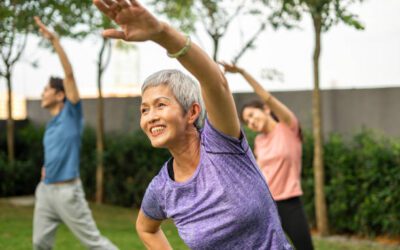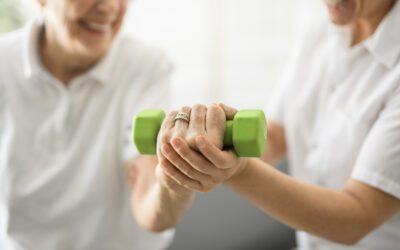BLOG
Most Popular Posts
Best Stretches for Seniors to Maintain Flexibility
Staying flexible is one of the simplest yet most powerful ways for seniors to preserve independence, reduce pain, and improve quality of life. As we age, muscles naturally lose elasticity, joints stiffen, and balance may decline. Regular stretching counteracts these changes, promoting mobility and preventing injuries that often come from sudden movements or falls.
Exploring the Primary Source of Pain Among Individuals Aged 65 and Over
As the global population continues to age, it's becoming increasingly important to understand the health issues that affect seniors. Chronic pain is one of the most common and impactful issues among older individuals. It's something that affects a significant...
Understanding the Benefits of Massage Therapy for Senior Well-Being
As we age, our bodies undergo numerous changes that can impact mobility, comfort, and overall health. Stiff joints, muscle tension, and chronic pain become more common, making it difficult to maintain an active lifestyle. This is where massage therapy plays a crucial role in promoting well-being among seniors. More than just a luxury, massage therapy is a therapeutic approach that offers significant physical, emotional, and mental benefits.
Why Regular Physical Therapy Appointments Are Essential for Seniors
As individuals age, the body naturally undergoes physical changes—muscle mass decreases, balance may waver, and flexibility tends to decline. These changes can make everyday tasks more difficult and increase the risk of falls or injuries. Regular physical therapy appointments help address these challenges proactively. For seniors, physical therapy is not just a treatment after an injury; it’s a preventive measure that sustains independence, mobility, and confidence.
What Families Need to Know About Speech Therapy for Seniors
Speech therapy is often associated with children learning to communicate, yet its role in senior care is equally vital. Aging brings natural changes in cognitive processing, muscle strength, and swallowing function. When a senior begins to struggle with speaking clearly, remembering words, or safely swallowing food, the impact reaches far beyond communication. It affects independence, safety, social engagement, and emotional well-being.
The Benefits of Cycling for Senior Fitness
As people age, maintaining physical health becomes more than just a lifestyle choice—it becomes a cornerstone of independence, mobility, and emotional well-being. Among the many forms of exercise available, cycling has emerged as a standout option for seniors looking to stay fit, energetic, and mentally sharp. Whether outdoors on a scenic trail or indoors on a stationary bike, cycling offers a low-impact, high-reward experience tailored to aging bodies.
Addressing Chronic Pain in Seniors Through Physical Therapy
Chronic pain is one of the most common health challenges faced by seniors, affecting nearly half of the older adult population. This persistent discomfort—often resulting from conditions like arthritis, neuropathy, osteoporosis, or past injuries—can significantly impact mobility, mood, and overall quality of life. Unlike acute pain that signals injury or illness, chronic pain lingers for months or even years and can be particularly debilitating without proper intervention.
Exercises to Improve Posture & Reduce Back Pain in Seniors
As we age, our bodies begin to reflect the years of wear and tear—especially in our back, shoulders, and hips. For many seniors, chronic back pain and poor posture are daily hurdles that can affect independence, mood, and overall quality of life. The good news? With the right exercises, it’s possible not just to alleviate discomfort but to rebuild strength, stability, and confidence in every step.
Senior Fitness: Tailoring Exercise Programs to Individual Needs
As individuals age, maintaining physical activity becomes not just a matter of wellness but a cornerstone of independence, mental clarity, and quality of life. Yet the same workout that benefits a 30-year-old may not be suitable—or safe—for someone in their 70s. This is where the importance of tailoring exercise programs to individual needs in senior fitness truly comes into play.
How Speech Therapy Strengthens Swallowing and Reduces Choking Risks
When most people think of speech therapy, they imagine help with pronunciation, stuttering, or language development. Yet, one of the lesser-known but vital roles of speech-language pathologists (SLPs) lies in supporting safe swallowing. The same muscles that allow us to form words and control breath also play a central role in guiding food and liquids safely down the throat. Weakness, poor coordination, or neurological changes can interrupt this process, increasing the risk of choking or aspiration.









